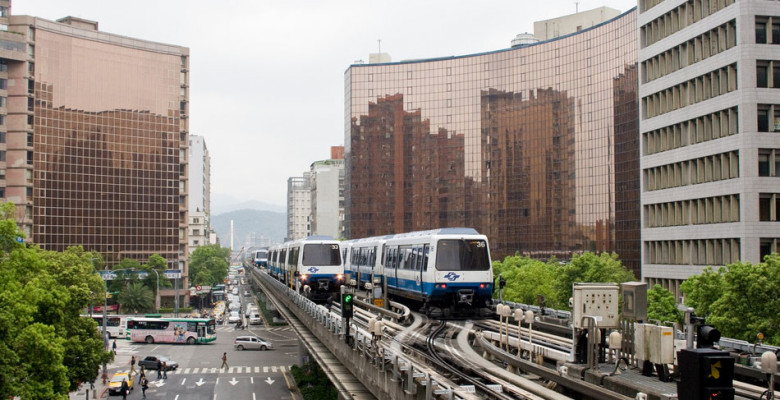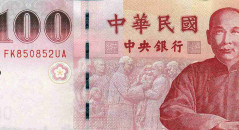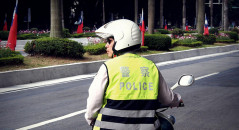
The old faithful scooter is not the only way around, and Taipei in particular has a well-integrated public transport network
Air Travel
Taiwan has two major international airports, Taiwan Taoyuan International Airport (IATA code: TPE), about 40 minutes outside Taipei, and Kaohsiung International Airport (KHH), in the suburbs of Kaohsiung. Two smaller airports, Songshan Airport (officially Taipei International Airport; TSA) and Taichung Airport (RMQ), offer limited international flights to a few destinations in Asia. The airport in Taoyuan is much bigger, and most international travellers will arrive there. Nearly 40 airline companies operate services to and from Taoyuan, including the two major Taiwanese carriers, China Airlines (not to be confused with Air China, from the PRC) and EVA, and other major international carriers like KLM, Qantas, and Singapore Airlines. The airport has two terminals so travellers departing Taiwan should check which terminal their flight leaves from before heading to the airport.
After decades without direct links to China, Taiwan now allows flights to many destinations in China. These fly not only from the four international airports mentioned above, but also from the airports at Hualian (HUN), Taidong (TTT), Magong (MZG), and Kinmen (KNH). Hualian also offers limited charter flights to Ishigaki, a Japanese island not far from Taiwan. The most popular destination by far for flights to China is Shanghai, reflecting the fact that many Taiwanese people travel there for business.
Taiwan also has some domestic air routes, mostly to the smaller islands scattered around the main island of Taiwan. A further ten airports service these routes, with four on the main island: Chiayi (CYI), Tainan (TNN), Pingdong (PIF), and Hengchun (HCN). The other six are located on the peripheral islands: Qimei (CMJ), Wang’an (WOT), Orchid Island (KYD), Green Island (GNI), Mazu Beigan (MFK), and Mazu Nangan (LZN). The routine west coast services between Taipei and Tainan or Kaohsiung did not survive the introduction of the high-speed rail line (see section on the HSR, below), so now the only services limited to the main island of Taiwan link the major west coast cities with the east coast or the southern cape.

Taiwan’s airports
Image by Michael A. Cannings (licensed under the Creative Commons)
Public Transportation
The public transportation system in Taipei is generally clean, punctual, reliable, and very affordable. Outside the capital only Kaohsiung has an MRT (metro) network, and it is not yet very extensive. Elsewhere people taking public transport will generally rely on the bus system, though outside the big cities the service can leave a lot to be desired.
Metro (MRT)
The first line of the Mass Rapid Transport system in Taipei opened in 1996, and since then it has grown into a vital part of the city’s infrastructure, with 1.55 million trips made on the network daily. The system runs from 6am to just after midnight, has 103 stations throughout Taipei and New Taipei, and is highly reliable, clean, and safe. An average journey costs between NT$25–40, and stored-value cards (called Easycards) can be purchased to speed your passage through the ticket barriers. There are a number of new lines under construction that promise to turn the network into one of the best in the world, but even in its current state the MRT can speed up many journeys around Taipei and some areas of New Taipei.

The High Speed Rail glides through rural Taiwan
Image by Pohan (licensed under the Creative Commons)
Railways
The Taiwan Railway Administration (TRA) runs the regular rail services around the island, and this network is consequently referred to as the TRA network. Though freeways and more recently the High-Speed Rail have caused a drop in passenger numbers since the heyday of the railways in the 1970s, the TRA is still a reliable and economical way to get around the island, and on the east coast in particular it is probably the best option available. TRA lines in and around major cities are often used as commuter routes from the suburbs to the central economic hubs, and over longer distances offer cheaper prices and more centrally located stations than the High-Speed Rail. For example, to travel from central Taipei to central Kaohsiung, a distance of 154 miles (248 km), a standard weekday single adult ticket on the TRA costs NT$843 and the fastest train will get you there in 4 hours 50 minutes. The whole network forms a closed loop around the island, and offers a great way to see some of the smaller towns, scenic countryside, and tourist spots.
Tickets can be purchased up to 14 days in advance, but must be collected from the station or a designated post office within two days of booking. Over the Lunar New Year celebrations and other busy times it is best to book in advance to avoid disappointment.

The main rail circuit around the island
Image by Michael A. Cannings (licensed under the Creative Commons)
High-Speed Rail
After entering service in 2007, the High-Speed Rail (HSR) has become an efficient and popular way to get around the densely populated west coast of Taiwan. With a top speed of 186 mph (300 km/h) it has slashed journey times over long distances, with the trip from Taipei to Kaohsiung coming down to 90 minutes on the express train. As a comparison, to drive or take the regular train over the same distance requires around five hours. Understandably the domestic air routes that formerly offered shuttle services down the western corridor struggled to compete, and now have all been discontinued. A standard adult weekday single from Taipei to Kaohsiung costs NT$1,490, with discounts available for return journeys or frequent travellers. One disadvantage of the HSR is that most of the stations (with the exceptions of Taipei and Banqiao in the north) are located outside the downtown areas of the cities they serve. Free shuttle buses to central areas are available, though this naturally affects the overall time to your destination.

The High-Speed Rail, planned stations in grey
Image by Michael A. Cannings (licensed under the Creative Commons)
Buses
The quality of the local bus service varies widely depending on where you end up living. In Greater Taipei it is generally pretty good, and most of the other large cities also have a decent service, but once you get into the smaller towns public transport just falls away and everyone drives or rides a scooter. In Taipei the system is integrated with the MRT network, and you can use the same stored-value card for both. By taking a combination of bus and MRT you can get pretty much anywhere in the city cheaply and in a reasonable amount of time.
There are also intercity buses, which offer the cheapest way to get around the island. They connect every major city on the island, and some of the more luxurious companies (particularly Ho Hsin) offer automatic massage armchairs with a personal integrated TV and games console. The five big intercity bus companies are:
- Aloha Bus (0800 043-168)
- Free Go Bus (0800 051-519)
- Ho Hsin (0800 002-377)
- Kuo Kuang (0800 010-138)
- Ubus (0800 241-560)
Taxis
In large towns yellow taxis are ubiquitous. You will rarely have to wait more than a minute or two to get a ride, hardly a surprise as Taipei has one registered taxi for every 82 residents. A rear seatbelt law was introduced at the beginning of 2012, so every cab should now have them fitted. The driving skills of Taiwanese drivers in general are quite poor and taxi drivers are no exception, so belt up. Fares are reasonable, and you are unlikely to be cheated by a driver. Metered rides start at NT$70-80, with a 10 km ride usually coming to somewhere around NT$300. A NT$20 surcharge (not indicated on the meter) is applied after 11pm. Many older people in Taiwan remember when driving a taxi was just about the only legitimate career option open to a convicted felon, and are consequently wary of cabbies, but the truth is nowadays taking a taxi is pretty safe, especially in the city. For extra peace of mind, particularly at night, you can order a cab from one of the large reputable firms like Da’ai or Taiwan Taxi (dial 55688 from cell phones), and note down the registration number of the cab (printed on the doors, the driver’s permit, and in large letters on the rear windshield). Send this to a friend for added reassurance.
Photo by Pedro Angelini.



